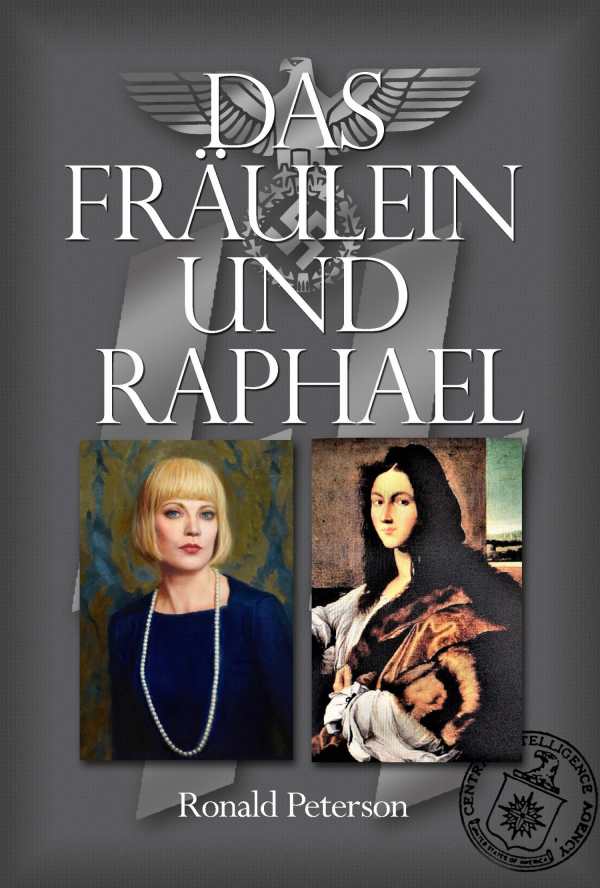Das Fräulein und Raphael
Das Fräulein und Raphael is an espionage novel that’s thick with facts as it follows its former Nazi heroine through her career in the CIA.
In Ronald Peterson’s epic historical novel Das Fräulein und Raphael, a young German woman becomes an American spy, and her thereafter storied life weaves together with key twentieth-century events.
In the early days of Nazi Germany, Kathryn Steiner prospers as the model of an Aryan woman: she’s youthful, beautiful, intelligent, and calculating. A sexual assault cements her antisemitism, setting her on a dark path.
After the war, Kathryn utilizes her Nazi party connections to escape Germany, armed with weapons skills and knowledge about espionage. Leaving a trail of bodies behind her, she arrives in New York in 1945 and enrolls in law school. Later, Kathryn is recruited by the CIA, and her prestige as a spy and assassin grows.
The novel is information heavy. It features photographs and images of documents throughout. Notes detail the ownership and importance of each shared element, contributing to the story’s textbook sensibilities. The impact is that the narrative itself is dry. It is most concerned with relaying the facts of Kathryn’s life, from her youth to her retirement from the CIA, and of the events that shaped the world after World War II.
Potentially dramatic scenes find Kathryn in mortal danger, but these are interrupted by lists and recitations of facts as well; such moments are resolved with speed. Sex scenes between Kathryn and various lovers are biological in tone, prioritizing dry technical details over erotic, romantic, and thrilling elements. Kathryn’s assassinations are marked by considerable buildup, though the kills themselves are resolved in a spare way. Much of the book is loaded with extraneous details, weakening the novel further and drawing attention to its inconsistent style.
In sections where Kathryn interacts with German characters, untranslated German phrases appear, limiting the audience’s ability to follow conversations. But many of these conversations are stilted regardless, recapitulating what Kathryn has already done or decided to do. Her inner monologue is more rounded, reactive, and realistic, though it is uncomfortable to be inside of her head.
Kathryn is an off-putting lead. She nurses deep hatred toward Jewish people throughout the book, even after an alleged change in her ideologies when she becomes an American citizen. Her thoughts and actions brim with hatred and disgust toward other people, and her successes are hard to celebrate because of this. In the end, she is a static figure who functions more as a lens through which to view history than as a dynamic character in her own right.
Das Fräulein und Raphael is an espionage novel that’s thick with facts as it follows its former Nazi heroine through her career in the CIA.
Reviewed by
John M. Murray
Disclosure: This article is not an endorsement, but a review. The publisher of this book provided free copies of the book and paid a small fee to have their book reviewed by a professional reviewer. Foreword Reviews and Clarion Reviews make no guarantee that the publisher will receive a positive review. Foreword Magazine, Inc. is disclosing this in accordance with the Federal Trade Commission’s 16 CFR, Part 255.

